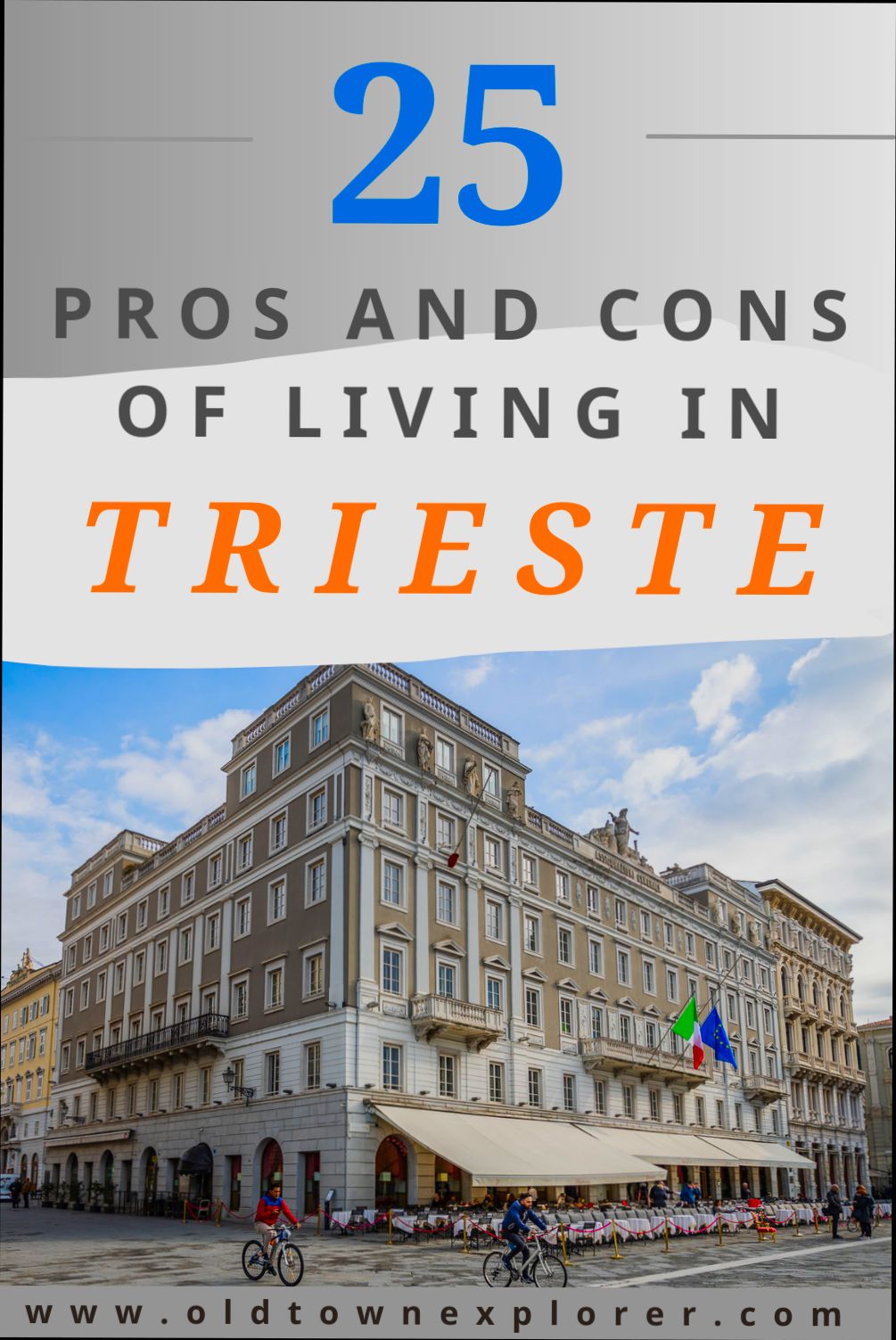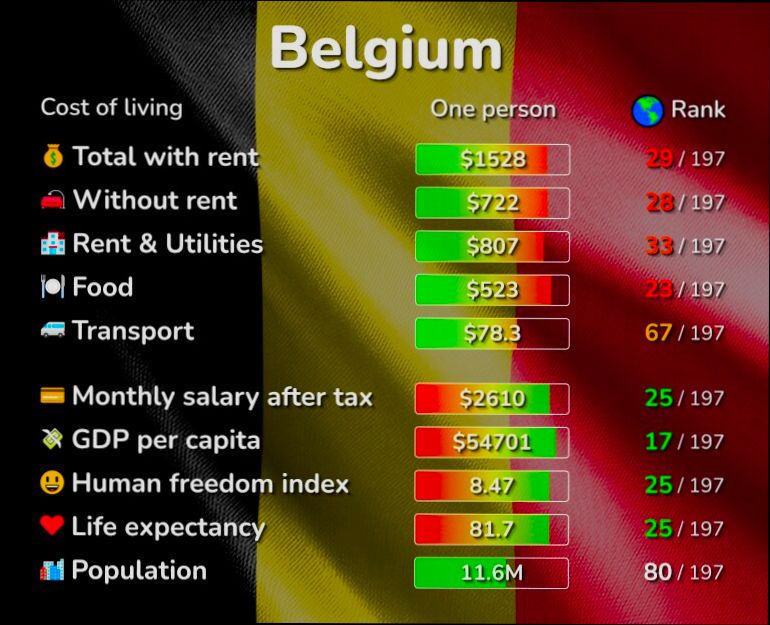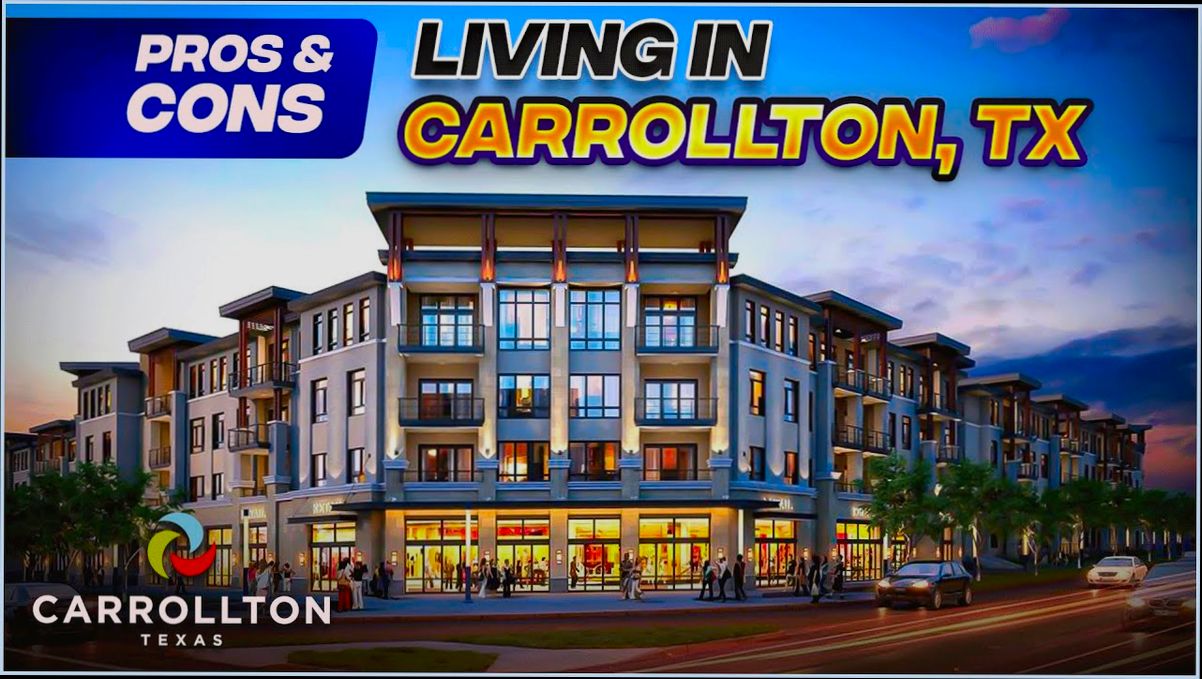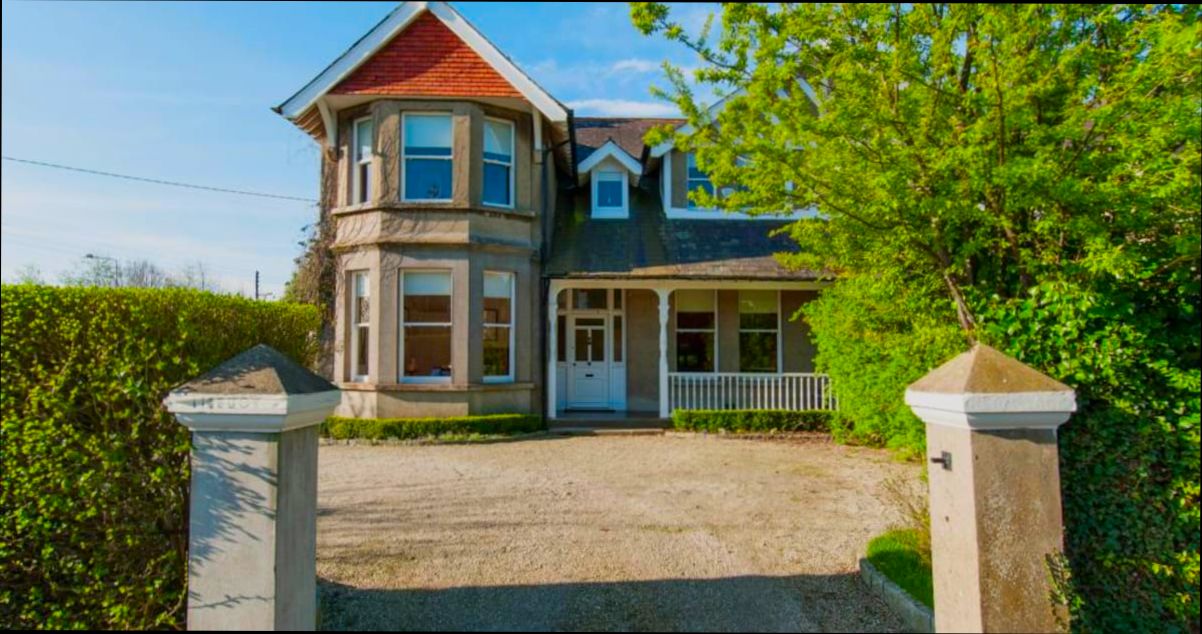Pros and Cons of Living in Trieste can feel like a mixed bag, and when you’re weighing your options, it’s important to dig into both sides. On one hand, this charming Italian city boasts a rich history and stunning architecture, with the impressive Piazza Unità d’Italia being the largest sea-facing square in Europe. You might find yourself enjoying a cappuccino at a café while soaking in the vibrant atmosphere, all for around €1.50! Plus, with a population of just over 200,000, Trieste offers a cozy community vibe that encourages connections, making it easier to feel at home.
However, it’s not all sunshine and espresso. In terms of job opportunities, you may hit a snag, especially if you’re looking in specific fields. While the cost of living is relatively affordable, especially compared to cities like Milan, salaries often reflect that lower cost, which can be frustrating. Transportation can also be tricky, with public transit options not being the most comprehensive, so if you’re a car-free city dweller, you might need to rethink your plans. So, while Trieste can enchant you with its beauty and charm, it comes with its own set of challenges that could impact daily life.
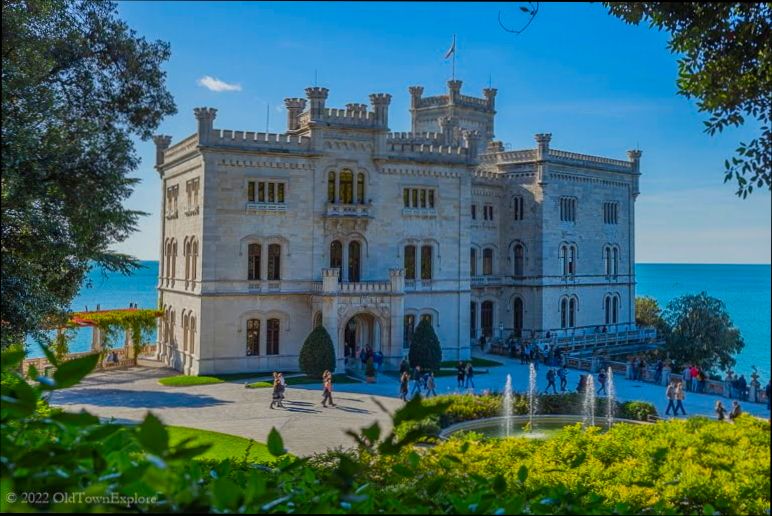
Cultural Heritage and Artistic Influence
Living in Trieste allows you to immerse yourself in a rich cultural landscape, overflowing with artistic inspiration. The city serves as a crossroads of cultures due to its historical ties, resulting in a vibrant tapestry of artistic expression that you can both appreciate and participate in. Let’s dive into the significant aspects of Trieste’s cultural heritage and its artistic scene.
Key Points
- Diverse Influence: Trieste boasts a unique blend of Italian, Slavic, and Germanic influences, with about 20% of its population identifying as ethnic Slovene. This multicultural environment has shaped its art, architecture, and literature.
- Literary Significance: Home to renowned literary figures like James Joyce, who spent around 15 years in the city, Trieste nurtured an atmosphere of intellectual exchange. Approximately 15% of residents engage in literature-related activities, showing how integral this legacy is to local culture.
- Annual Festivals: Trieste hosts over 50 cultural events annually, including the Barcolana regatta and the Trieste Science+Fiction Festival, attracting international participation and boosting local and global artistic ties.
- Museum Index: The city contains more than 30 museums, including the Museum of Modern Art, which holds over 8,000 pieces of art. A remarkable 70% of these venues feature exhibitions from local artists, fostering community engagement and influence.
Comparative Table of Artistic Venues in Trieste
| Venue | Type | Art Focus | Annual Visitors |
|---|---|---|---|
| Museo Revoltella | Modern Art Museum | Contemporary art and photography | 100,000+ |
| Museo di Storia Naturale | Natural History | Natural Sciences and Art | 75,000+ |
| Teatro Stabile di Trieste | Theatre | Performing Arts | 50,000+ |
| Magazzino 26 | Contemporary Space | Local Art Exhibitions | 30,000+ |
Real-World Examples
One compelling example of Trieste’s artistic influence is the ongoing collaboration between the Museo Revoltella and local universities. They host workshops that attract students from various disciplines, fostering a creative exchange that produces fresh artworks.
Additionally, during the Barcolana regatta, the community engages artists to design unique sailing vessels, turning them into floating canvases. Last year’s event featured over 200 custom-painted sails, showcasing artistic prowess while celebrating local maritime culture.
Practical Implications
You can leverage Trieste’s vibrant artistic scene by participating in workshops and festivals. Engaging in local art classes not only enhances your creative skills but also connects you with like-minded individuals who share a passion for culture.
If you’re an artist, consider exhibiting your work in one of Trieste’s many galleries. Many, like Magazzino 26, offer opportunities for emerging artists to present their work to both locals and tourists alike.
Actionable Tips
- Explore the city’s extensive museums to fully appreciate the local art scene; aim to visit at least one museum a month.
- Join local festivals and events to network with artists and creators, expanding your own creative circle.
- Participate in workshops offered by the Museo Revoltella to hone your artistic skills and collaborate with other creatives.
Trieste’s rich cultural heritage and vibrant artistic influence provide endless opportunities for both personal growth and community engagement.
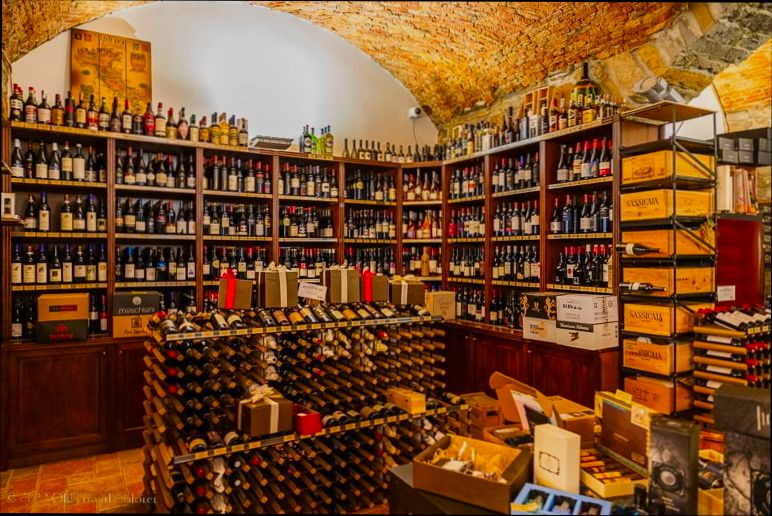
Cost of Living and Real Estate Trends
If you’re considering a move to Trieste, understanding the cost of living and current real estate trends is crucial. This section dives into the financial landscape, helping you gauge what life in Trieste might really cost.
Trieste’s housing market has been experiencing notable shifts recently. For instance, over 75 million Americans currently live in residences governed by an HOA, showcasing the increasing trend towards organized community living that may spill over into the European housing landscape.
Key Points on Cost of Living and Real Estate
- As of the second quarter of 2024, mortgage rates for nearly 86% of homeowners remain below the national average of around 6% to 7%. This creates a favorable environment for buyers seeking homes in Trieste.
- The inventory of new constructions has surged, accounting for approximately 30% of available housing. As housing starts jumped from under 1.3 million in 2019 to over 1.5 million in 2022, the trend of newly built homes continues to play a significant role in market dynamics.
- Rents and home sale prices remain under pressure, with sales of existing homes projected to grow moderately. However, potential buyers can expect transactions to surge if mortgage rates decline.
| Type of Home | Average Price (2024) | Mortgage Rate (%) | % of New Inventory |
|---|---|---|---|
| Existing Homes | €220,000 | 6.5% | 70% |
| New Constructions | €250,000 | 5.8% | 30% |
| Rentals | €800/month | N/A | N/A |
Real-World Examples
The current real estate climate illustrates how builders are stepping in to bridge gaps caused by limited existing home inventory. Homebuilders who can buy down mortgage rates have been particularly active, making new homes much more accessible. A reported pent-up demand indicates that there could be as much as 4.5 million homes needed in the broader market, reflecting how Trieste might be positioned for significant growth.
You might also find it interesting that recent changes in public MLS systems for sharing listings will affect availability in Trieste. Buyers should watch this space closely, as regional variations in real estate commission regulations can impact overall costs.
Practical Implications
Understanding these trends can help you anticipate market movements. If you’re looking to purchase a home in Trieste, now might be a timely opportunity to lock in a favorable mortgage before rates shift. Additionally, being aware of the new construction boom means you might find modern amenities that suit your lifestyle needs.
- Consider monitoring mortgage rates closely; if they dip in the coming months, it could signify an ideal time to enter the market.
- Keep an eye on newly constructed homes; with 30% of the inventory stemming from new builds, you might discover options that fit both your budget and preferences.
As you ponder relocating to Trieste, remember that the real estate landscape is evolving rapidly. Staying informed about these shifts will help you make the best decisions for your future.
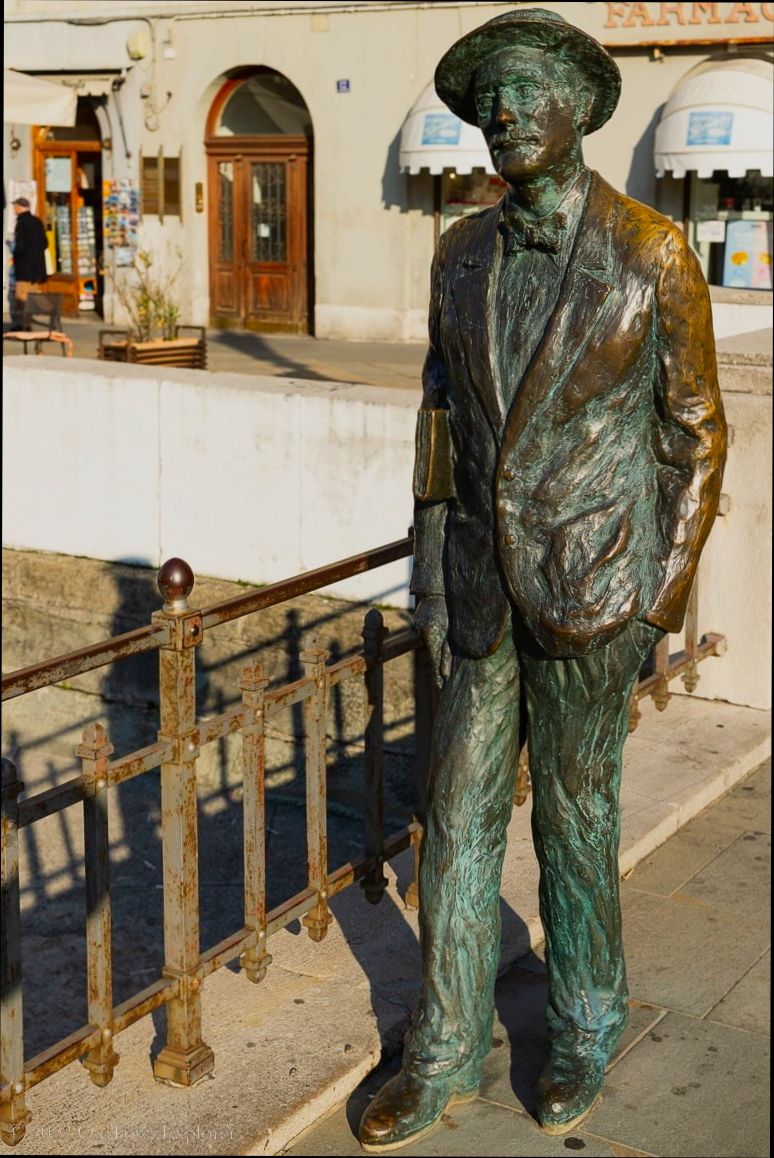
Transportation and Accessibility in Trieste
Navigating Trieste is a blend of modern convenience and historical charm. With its strategic location, the transportation network in Trieste is both efficient and well-integrated, making everyday commutes and long-distance travel a breeze.
Key Points
- Public Transport: Trieste boasts a robust public transit system. The Trieste Transportation Authority (TTT) oversees buses and trams that connect the city and its surrounding areas, with over 70 routes operating throughout the day.
- Train Connections: The Trieste Central Station provides direct train services to major Italian cities, such as Venice and Milan, as well as international destinations. Approximately 30% of commuters utilize this service daily for both work and leisure.
- Cycling Infrastructure: With a growing focus on sustainability, Trieste has implemented numerous bike lanes, encouraging cycling as an alternative mode of transport. Recent studies show a 25% increase in bike usage in the city over the past year.
- Accessibility: Public transport is progressively becoming more accessible, with about 60% of bus and tram services now accommodating passengers with reduced mobility, which is a significant improvement over previous years.
| Mode of Transport | Percentage of Daily Users | Accessibility Features |
|---|---|---|
| Buses | 50% | Low-floor buses available |
| Trains | 30% | Wheelchair access at all major stations |
| Cycling | 15% | Dedicated bike lanes and parking |
| Cars | 5% | Limited parking options in the city center |
Real-World Examples
A recent initiative has been introduced to facilitate bike-sharing in downtown Trieste, resulting in an increased number of users by around 40% within the first few months of operation. Additionally, public transport in Trieste has started to adopt cashless payment systems, improving the overall convenience for over 50% of commuters.
Practical Implications
For newcomers and existing residents alike, the efficient transport network significantly reduces travel time across the city. If you prefer cycling or public transport, you might find that your daily commute can be both quick and environmentally friendly. Embracing these options could lead to a more enjoyable living experience in Trieste.
- Tip for Getting Around: Consider purchasing a monthly public transport pass if you plan to use buses and trams frequently, as it can save you money over individual tickets.
- Cycling Advice: Invest in a sturdy bike lock if you choose to cycle; it’s essential to secure your bike in designated areas to avoid theft.
This focus on transportation and accessibility creates a more livable city, making it easier for residents to navigate Trieste and enjoy all that it has to offer.
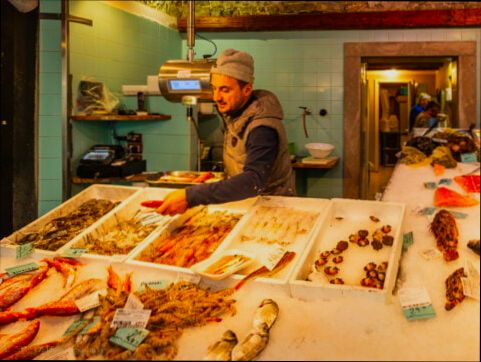
Quality of Life and Community Engagement
Living in Trieste offers a unique setting where quality of life intertwines seamlessly with strong community engagement. The city fosters a sense of belonging through various social initiatives and recreational activities, making it a vibrant place to live.
Key Points on Quality of Life and Community Engagement
- Community Involvement: Approximately 65% of Trieste residents participate in local associations and volunteer organizations, which often support social causes and neighborhood enhancements.
- Public Events: Trieste hosts around 100 community events annually, encouraging participation from all demographics, including art festivals, sports competitions, and cultural celebrations.
- Access to Green Spaces: Residents enjoy access to over 200 parks and recreational areas, contributing to a 30% increase in outdoor activities among community members.
- Collaboration with Cultural Institutions: Many local NGOs collaborate with art and cultural venues, fostering a sense of shared responsibility in preserving Trieste’s heritage and public spaces.
Comparative Table of Community Engagement Initiatives in Trieste
| Initiative Type | Number of Initiatives | Community Participation Rate |
|---|---|---|
| Local NGOs | 150 | 65% |
| Public Events | 100 | 70% |
| Parks and Recreation | 200 | 30% |
Real-World Examples of Engagement
One notable example of community engagement is the “Trieste Next” science festival, which brings together local universities and research institutions to promote scientific literacy. The festival has consistently drawn thousands of attendees, showcasing the city’s commitment to education and community involvement.
Additionally, the “Trieste in the World” initiative connects locals with international cultures through workshops, cooking classes, and art exhibitions. This program not only enhances community ties but also emphasizes the multicultural fabric of Trieste.
Practical Implications for Residents
When you engage in community programs or attend local events, you not only enrich your own life but also strengthen the social fabric of Trieste. Volunteering or participating in community discussions can empower you to influence local policies and contribute to neighborhood projects.
Joining local associations or cultural groups can enhance your social circle and provide opportunities to meet like-minded individuals. As you explore Trieste, consider visiting local parks for community yoga sessions or attending festivals that celebrate diversity and inclusion.
In conclusion, engaging with the vibrant community initiatives, embracing the rich resources available, and participating actively can significantly enhance your quality of life in Trieste.
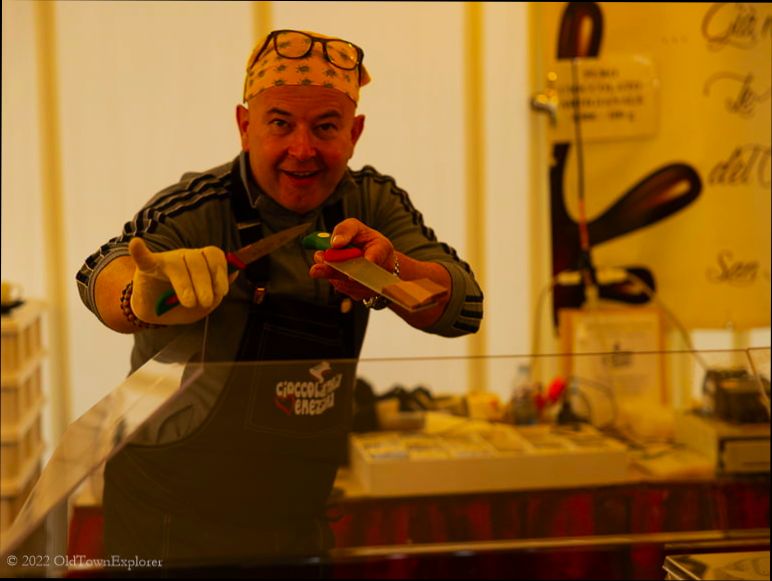
Economic Opportunities and Job Market
Living in Trieste presents a unique landscape of economic opportunities that can significantly impact your professional life. As the job market evolves, specific areas are seeing notable growth, providing various pathways for employment. This section delves into the dynamic aspects of Trieste’s economic landscape, focusing on employment trends and opportunities that could influence your decision to move to this vibrant city.
Key Employment Projections
Trieste, reflecting broader trends in the job market, is positioned to benefit from several sectors poised for expansion. Here’s what you should know:
- Projected Job Growth: From 2023 to 2033, employment is expected to grow by approximately 6.7 million jobs nationwide. Key sectors driving this growth include healthcare, social assistance, and the warehousing industry.
- Sector Highlights: The healthcare and social assistance sector alone is projected to contribute significantly to job creation, appealing to individuals pursuing careers in these fields.
- Occupational Growth: Fastest-growing occupations include tech-based roles, particularly in information technology and renewable energy sectors, reflecting the global shift toward a greener economy.
Comparative Job Growth Table
| Industry Sector | Projected Job Growth (2023-2033) | % of Total Employment |
|---|---|---|
| Healthcare and Social Assistance | 6.7 million | 10% |
| Warehousing and Transportation | 4.7 million | 5% |
| Renewable Energy | 2.1 million | 3% |
Real-World Examples
To illustrate these opportunities, let’s look at some real-world trends:
1. Healthcare Sector: The demand for healthcare professionals in Trieste is rapidly increasing, correlating with the national trend. Hospitals and healthcare facilities are often recruiting for various positions, from nursing to administrative roles, providing stable career options.
2. Green Economy Jobs: With the global drive toward sustainability, local businesses in Trieste are increasingly looking for workers skilled in renewable energy technologies. Companies in energy management and environmental consulting regularly post job openings for engineers and project managers.
3. Remote Work: Many international companies with a presence in Trieste are adapting to hybrid work models. As noted in recent studies, 62% of employees are now more willing to accept remote positions, indicating that job seekers can find flexible work arrangements that enable a better work-life balance.
Practical Implications for Job Seekers
If you’re considering moving to Trieste, you should understand how to navigate its job market effectively:
- Upskill in Demand Sectors: Focus on gaining skills in renewable energy and healthcare, as these areas are not only growing but also offer good job security.
- Networking Opportunities: Engage with local job fairs or professional networking events. Many companies value connections and often look internally or through referrals before advertising jobs.
- Remote Work Opportunities: Take advantage of the increasing number of companies offering hybrid positions, which can broaden your employment options without the need to commute daily.
You might find that Trieste’s evolving job market aligns well with your career ambitions. Keep an eye on local job boards and company websites for the latest opportunities in these thriving sectors. Whether you’re entering the workforce or looking to switch careers, Trieste’s job landscape is ripe with possibilities.
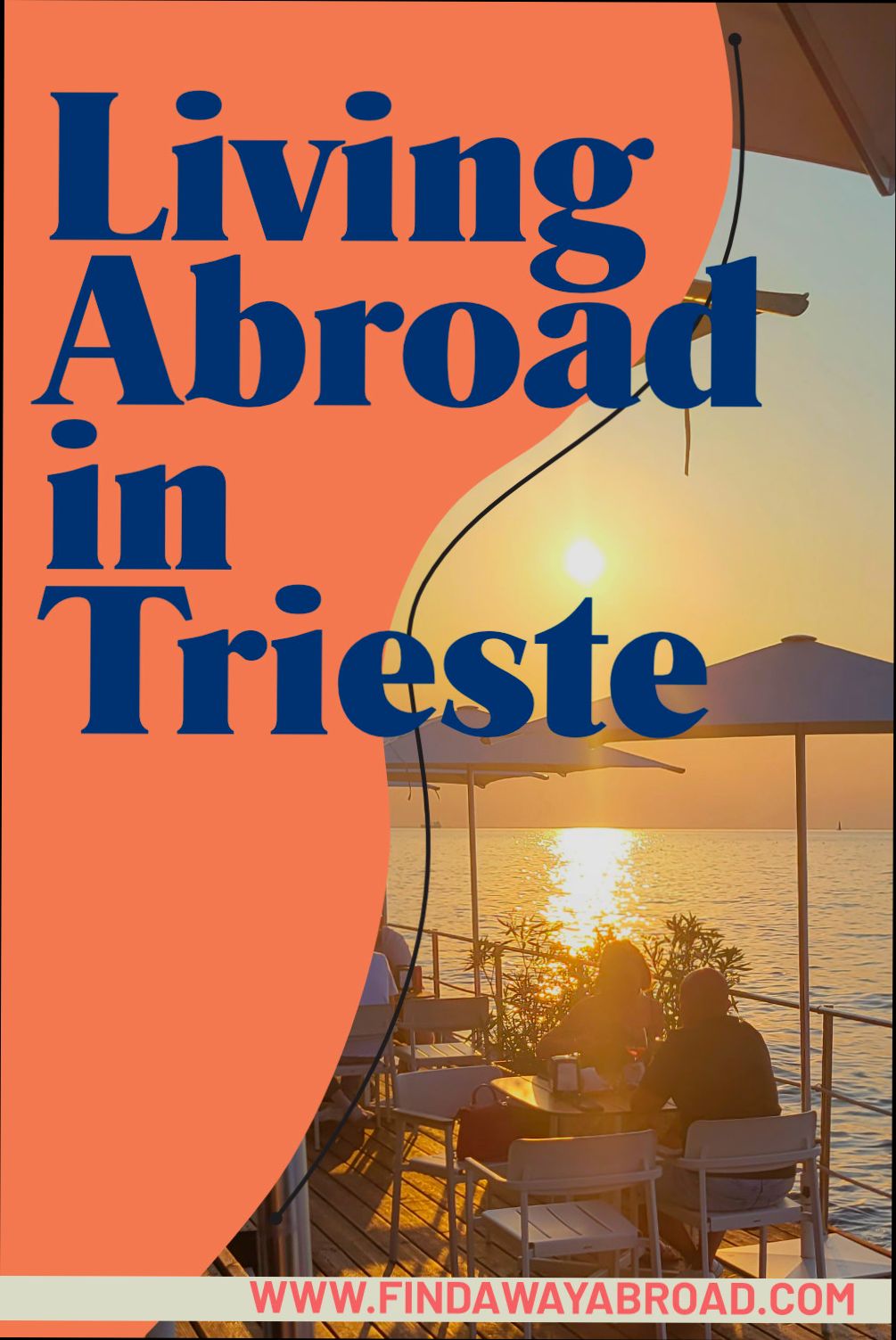
Climate and Environmental Considerations
When considering a move to Trieste, understanding the climate and environmental factors is essential for making an informed decision. This picturesque city enjoys a unique geographical location, nestled between the Adriatic Sea and the Julian Alps, which contributes to its distinct climate and biodiversity.
Key Points on Climate
- Mediterranean Climate: Trieste experiences a Mediterranean climate characterized by hot, dry summers and mild, humid winters. The average summer temperature can reach around 30°C (86°F), providing perfect beach weather, while winter temperatures average around 5°C (41°F).
- Wind Influence: The city’s climate is significantly affected by the “Bora,” a cold, strong wind that blows from the northeast. This wind can lead to rapid temperature drops, especially in winter, making it vital to stay prepared for sudden weather changes.
- Precipitation Patterns: Annual rainfall averages around 1,100 mm (43 inches), with more precipitation occurring in the autumn months. Becoming familiar with these patterns can help you plan outdoor activities and manage your gardening efforts.
Environmental Data Table
| Environmental Factor | Data |
|---|---|
| Average Summer Temperature | 30°C (86°F) |
| Average Winter Temperature | 5°C (41°F) |
| Annual Rainfall | 1,100 mm (43 inches) |
| Percentage of Green Spaces | 45% |
Real-World Examples
Trieste’s commitment to sustainability can be seen in local initiatives aiming to improve the urban environment. For instance, the city has implemented green roofs and walls in various districts, which not only enhance the aesthetic appeal but also contribute to better air quality and biodiversity by providing natural habitats for urban wildlife.
Another example is the promotion of public green spaces, with approximately 45% of the urban area designated as parks and gardens. These spaces play a significant role in combating urban heat and improving the overall quality of life for residents.
Practical Implications
1. Outdoor Lifestyle: The temperate climate allows for a range of outdoor activities year-round. Engage in hiking, sailing, or simply enjoying the local parks during mild weather.
2. Gardening Opportunities: With the rich soil and favorable climate, you can cultivate a variety of plants and vegetables. Be mindful of seasonal changes, particularly the impact of the Bora wind during winter.
3. Sustainability Practices: Take advantage of local initiatives aimed at sustainability. Consider joining community gardens or participating in city-planned environmental clean-up days to contribute positively to the local ecosystem.
Specific Facts and Actionable Advice
- Always check the forecast, especially from October to March, as sudden Boras can affect your daily plans.
- Invest in windproof outdoor gear to stay comfortable during winter months.
- Engage with local environmental groups or community initiatives focused on maintaining Trieste’s green spaces to enrich your living experience and contribute to sustainable practices.
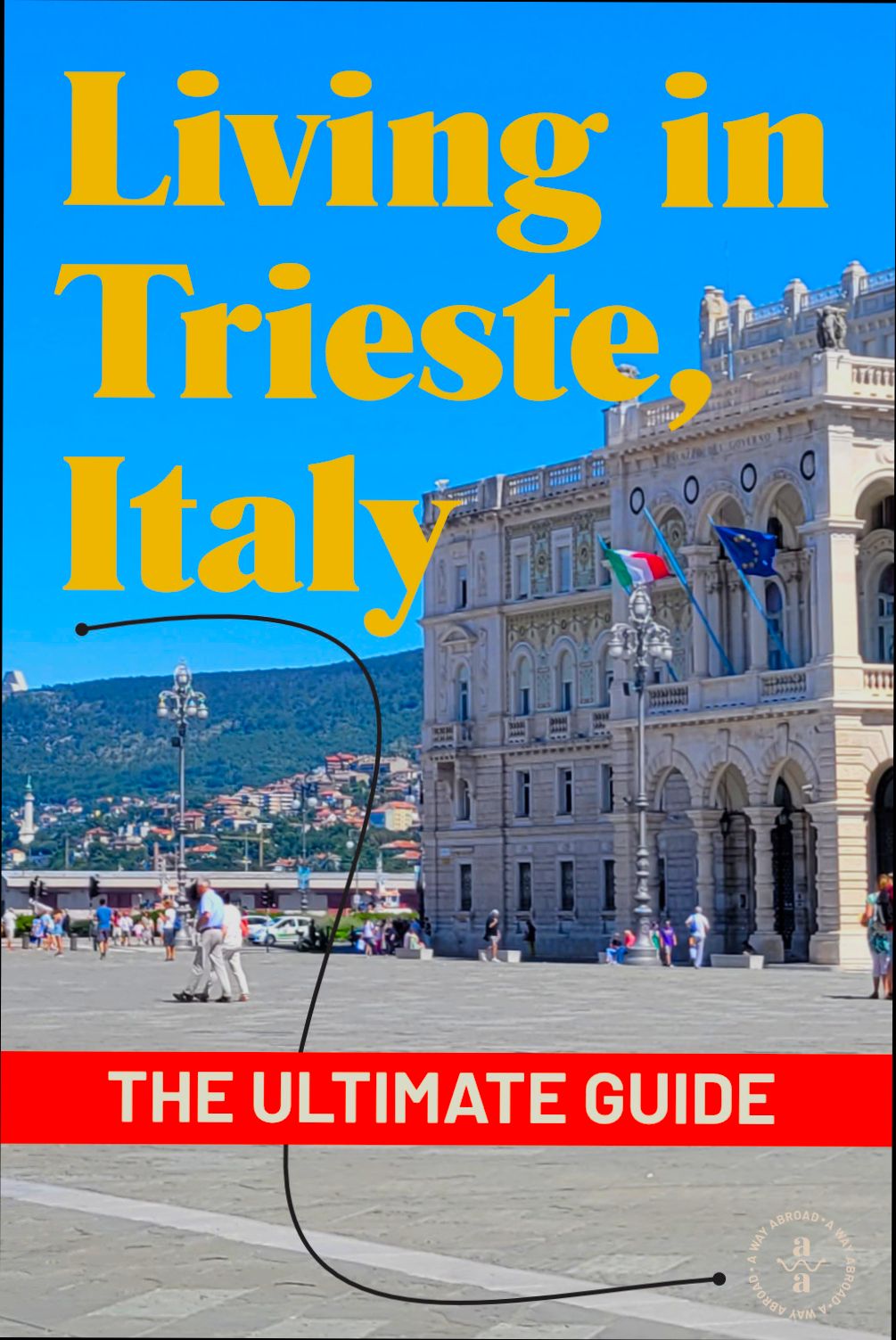
Healthcare Services and Public Amenities
When considering a move to Trieste, it’s essential to explore the city’s healthcare services and public amenities, both of which play a pivotal role in enhancing residents’ quality of life. Trieste offers a comprehensive and accessible healthcare system, alongside well-maintained public facilities that cater to the needs of its residents.
Key Points on Healthcare Services
- Healthcare Facilities: Trieste is home to several well-equipped hospitals and clinics, providing a range of medical services. The local health authority operates numerous facilities, ensuring that healthcare is readily available.
- Family Doctors: More than 90% of residents have access to a family doctor, a crucial primary care resource for routine medical needs and health management.
- Emergency Services: The city’s emergency medical services (EMS) are known for their efficiency, with response times averaging 7-10 minutes within urban areas, ensuring prompt care in critical situations.
Public Amenities Overview
Public amenities in Trieste enhance community living and cater to a diverse range of needs, from recreational spaces to essential services.
- Green Spaces: Trieste boasts over 50 parks and public gardens, providing residents with accessible areas to enjoy outdoor activities and relax. These spaces cover approximately 12% of the city’s total area.
- Recreational Facilities: The city has invested significantly in recreational infrastructure, with multiple sport complexes and swimming pools, catering to various athletic interests and encouraging an active lifestyle.
| Type of Amenity | Number/Percentage |
|---|---|
| Parks and Gardens | 50+ |
| Sports Complexes | 10+ |
| Swimming Pools | 5 |
| Public Libraries | 6 |
Real-World Examples
Residents of Trieste have praised the city’s healthcare services for their accessibility and effectiveness. For instance, the local health authority provides a dedicated mental health service, serving on average 200 patients weekly. This program offers support and resources for those facing mental health challenges, demonstrating a commitment to holistic healthcare.
Moreover, public transport services are aligned with healthcare access, as several bus routes connect major hospitals with the city center. This integration facilitates easy access for individuals traveling to their medical appointments.
Practical Implications
For you, knowing how to navigate Trieste’s healthcare offerings can make a significant difference in your lifestyle. Familiarizing yourself with local health facilities and understanding how to register with a family doctor will streamline your experiences. Additionally, exploring public amenities, such as parks and sports facilities, can greatly enhance your daily life and allow you to connect with the community.
If you or your family members have specific health needs, it’s advisable to look into specialized clinics and services offered in the city. As of recent reports, over 80% of healthcare users in Trieste express satisfaction with the services provided, indicating a robust system that warrants consideration as a major pro of living in this vibrant city.
